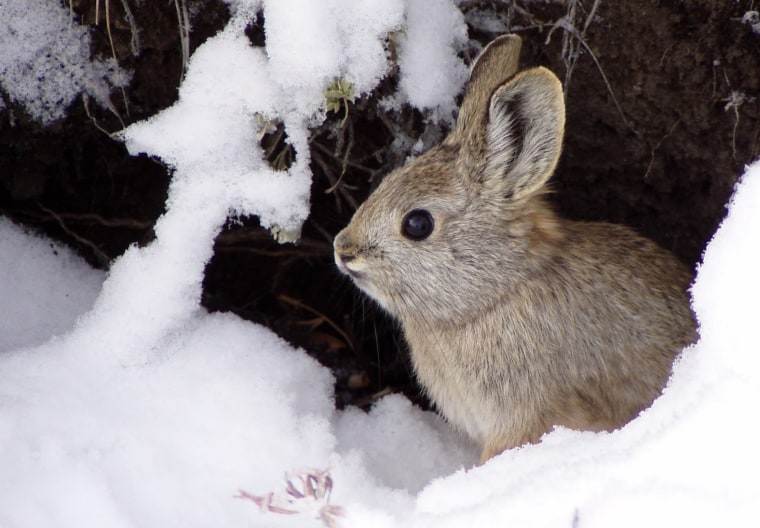The pygmy rabbit does not warrant protection under the endangered species act, a federal agency said Wednesday.
The U.S. Fish & Wildlife Service concluded that while there are pressures to the rabbit's habitat, it is not enough to threaten the survival of the species. The pygmy rabbit is the smallest in North America, growing between 9 and 12 inches in length.
"We find there has been some loss and degradation of pygmy rabbit habitat range wide, but not to the magnitude that constitutes a significant threat to the species," said Bob Williams, the Fish & Wildlife Service supervisor for the region. "The comparison of available historical and current data indicates that pygmy rabbits seem to occur in a similar distribution pattern, and they have been documented as occurring in new locations."
The agency considered protecting the rabbit in the states of California, Nevada, Oregon, Idaho, Utah, Wyoming and Montana. One branch of the species, the Columbia Basin Distinct Population Segment in Eastern Washington, was listed as endangered in 2003. Scientists at Washington State University have for years been breeding and releasing pygmy rabbits in an effort to re-establish a population. Many have been devoured by predators.
The Western Watersheds Project has been pushing for protection of the rabbits, which weigh up to one pound and can fit in a man's palm.
The group contends rabbit numbers have been decreasing for years in the West because of habitat loss, which reduces their ability to escape predators and to keep their genetic diversity. The group did not immediately return a message seeking comment.
In 2007, a federal judge in Idaho overruled the agency's denial of protection after a 2005 petition and ordered the new review.
Rabbit advocates argued that the species was losing population and its sagebrush habitat because of agricultural development, livestock grazing, urban and rural development, energy development, invasive plant species, and fires. The rabbits also faced threats from predators and disease, the petition said.
But the agency concluded there is no sign the rabbits are significantly impacted by sagebrush loss or modification, predators, disease or other threats.
The rabbits are typically found in areas of tall, dense sagebrush where soils are sufficiently deep and loose to allow them to dig their own burrows.
